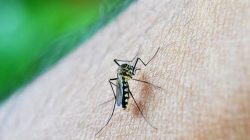Making the Most of Winter School Holidays
Winter school holidays can be a challenging time for families. Parents often find themselves balancing work commitments with the need to keep their children engaged, especially when the weather turns cold and kids tend to gravitate towards the couch and their devices. The question then becomes: what other activities can you try? And how can you encourage kids to move without it feeling like a chore or a punishment?
There are plenty of ways to keep children active and entertained during the holidays, whether they’re young or in the older primary years.
The Importance of Physical Activity
It’s well known that many children aren’t as active as they should be. According to a 2022 report card on physical activity in Australia, local children received a D- grade. This means less than a quarter of children and young people met the recommended guidelines of 60 minutes of moderate to vigorous physical activity each day. At the same time, excessive screen use is one of the top concerns for Australian parents regarding their children’s health.
Activities for Younger Children (5–8 Years)
In Pieter Bruegel’s 1560 painting Children’s Games, more than 80 different childhood games and outdoor activities are depicted, including playing with balls, swinging, climbing trees, and engaging in imaginative play. Many of these ideas are still relevant today. Encouraging kids to embrace the outdoors is a great way to get them moving. It’s okay if they get a little wet or muddy—this does mean more washing, but it also creates fun memories.
Consider going on an adventure to the city, a café, library, or museum, or simply finding puddles to splash in. A change of scenery can do wonders for cabin fever. Visiting the park or nearby nature spots is also beneficial. Research shows that playing in green spaces improves children’s mental and emotional wellbeing.
If your toy cupboard feels repetitive, consider visiting a local Toy Library to borrow puzzles, board games, and other activities. Alternatively, arrange a toy swap with a trusted neighbour or friend. Don’t underestimate the joy of doing basic tasks together over the holidays, such as cooking, baking, sending cards, writing letters, or reading a book. These activities help build connections and create lasting memories.
You could also encourage kids to create an art exhibition or practice for a home dance or music concert while you make a cup of tea.
Activities for Older Primary Children
Older children love to create, work together, and connect with their peers. You can encourage them to channel popular YouTubers and gamers by setting up physical challenges at home, such as a home holiday Olympics, a safe Ninja-style circuit, or an obstacle course. Turning everyday chores into “missions” that earn rewards like their favorite meal or a shopping trip can also be a fun approach.
Keep moving by breaking up sitting time with TikTok-style dances or physical challenges, such as how many star jumps can be done in a minute. If you have wearable tech like smartwatches, track active time and set up friendly competitions for steps while playing with pets, cleaning, or dancing around the house.
A 2022 Australian study suggests that the “break up your sitting” approach may result in children being more active than a simple “move more” message. Also, consider screen time that gets kids moving, such as sports-based games. Research shows that the energy expended during active gaming is equivalent to a brisk walk. Not all screen time has to be sedentary.
A Day Without Devices
Try a whole day without devices to show children it’s possible! On these days, give the kids more decision-making power. They could pick (and hopefully) make their meals, invite a friend over, decide on games to play, or choose what art and craft to make.
Winter holidays are a great opportunity to set new active habits that will benefit not just now, but also for the spring and summer breaks ahead. By encouraging movement and creativity, families can create meaningful experiences and foster healthier lifestyles for children.







